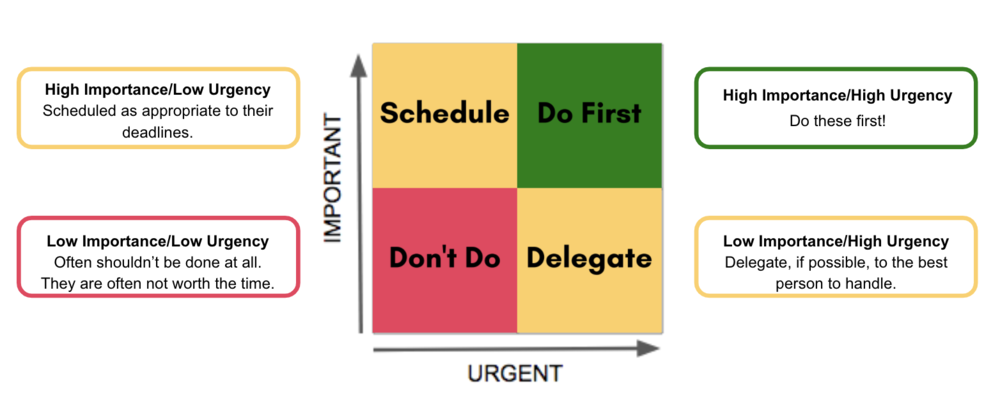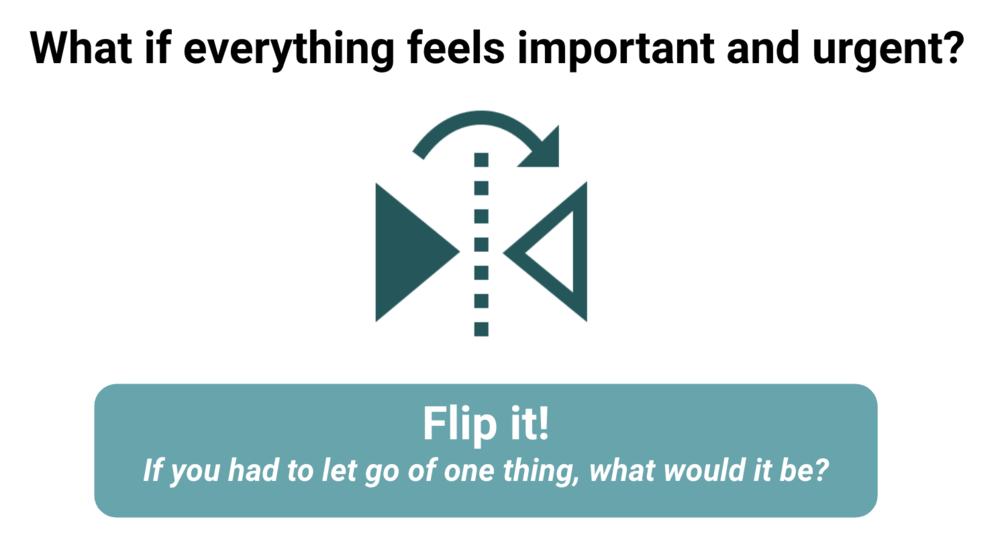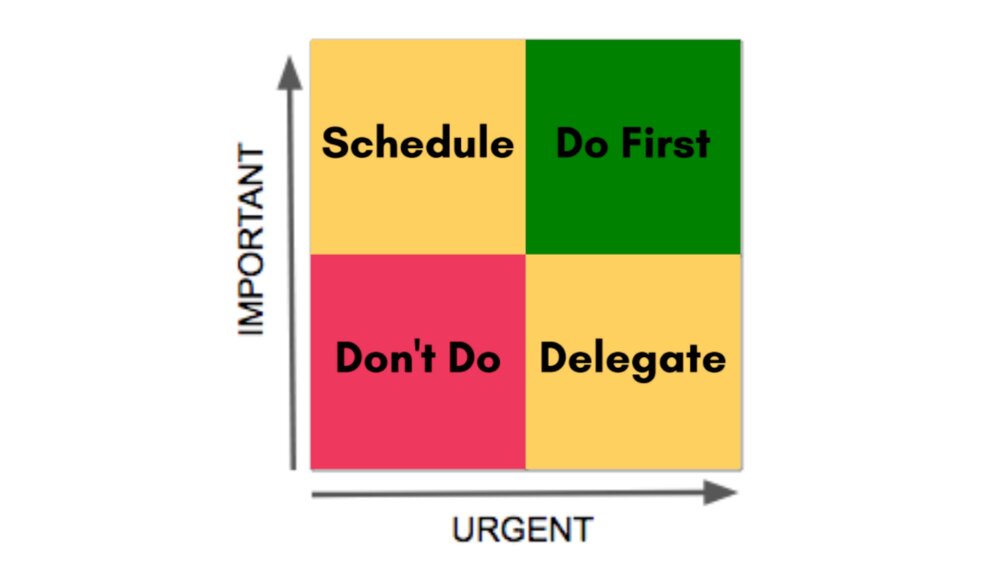
In my recent survey, one of the top issues you mentioned struggling with was prioritization. How to prioritize competing demands from your manager and coworkers, or work and family? How to prioritize when you’ve got too much to do? How to prioritize when things keep changing?
This is also a common refrain from my clients and workshop participants.
And here’s why it’s hard. When you start thoughtfully and realistically prioritizing, you’re forced to confront a harsh reality: You’re not going to do all the things.
And neither am I. In fact, we’re all gonna die someday (some faraway day, I hope!) with a big long list of all the things we didn’t do. That’s reality. And I actually think it’s not so bad. What a boring life we’d be living if we had to strive for nothing! If everything was predictable! If we had time for everything and never had to make choices.
But no. You and me? We live full lives. We have lots of stuff we want to do. (And lots of stuff we think we have to do.) More, in fact, than we are capable of doing.
So, if life’s is not about “doing it all”, where does that leave us?
Well, what if you could prioritize in such a way that you knew at the end of every single day, that what you did today was more important than what you didn’t do? Wouldn’t that feel great? It’s kinda like the adult version of knowing that you did your best. And what more can you do than your best? Nothing.
So today I want to start to answer the question of “Just how do we actually make prioritization decisions?” How do we choose what we need to do today, or tomorrow, or next week? How do we get to that point where we feel good about our (often difficult) prioritization decisions? To the point where, if you didn’t do something, it was because you chose not to do it for something else that was more important and not because it fell thought the cracks or your forgot.
When prioritizing, sometimes it’s obvious. There’s a true deadline; that report is due tomorrow and you’ve got just enough time to make it happen. But when you’ve got a whole lot on your plate, it can be a bit more unclear. It can feel as though there are far too many things “due tomorrow” than you can possibly do. And that’s when I find the use of prioritization frameworks to be really helpful.
Today, we’ll walk through the Eisenhower Matrix. If you have any mental image in your head at all when I say “prioritization framework”, it’s likely this one. Sometimes you’ll see it referred to as a the “Urgent/Important Matrix” or the “Time Management Matrix”.
Why is it called the Eisenhower Matrix? Well, because it’s based on President Dwight Eisenhower’s prioritization methods (although it was later popularized by Stephen Covey in “The 7 Habits of Highly Effective People”.)

First, you’ll see that on the vertical axis is how important something is and on the horizontal axis is how urgent it is.
Let’s talk through each of the boxes starting in the top right and going clockwise:
- Important/Urgent = Do First
- Things that are both of high importance and high urgency should be done first. This makes sense, right? If it’s important and it’s urgent, that demands your time in the immediate future.
- The due date is looming and the work will make a difference. Now is the time to act.
- Not Important/Urgent = Delegate (or do next)
- Then we have things that aren’t very important, but are still urgent. If at all possible, these items should be delegated to the best person to handle them. And if you’ve got no one to delegate to, then these things should be done after the more important, but still urgent items.
- Easy stuff that’s right in front of you (like email) often falls into this bucket. And because it’s easy, and it’s right there, and it seems urgent, you do it., at the expense of the important things. In fact, unless you’re careful, you can fill your whole day, day after day, with this stuff and then be left wondering why you don’t have time for the important stuff.
- Not Important/Not Urgent = Don’t Do
- Items that are neither important or urgent often shouldn’t be done at all. They are usually not worth the time.
- Now, can you always decide this on your own, in a vacuum? No. At work you might not be in a position to simply decide not to do something. But, you can use this framework to have a conversation with others about what’s a good use of time and what’s not.
- A classic example for me here was “organizing all my books by color”. I had this on my task list for. a good long while before I realized that this was not important, not urgent, and I wan just never gonna do it.
- Important/Not Urgent = Schedule
- And finally, we get to the things that are important, but not urgent. These are things that we know we need to do, but they can be done “later”.
- This is the trickiest box because it can be a trap. What we should do with these items is schedule out when we’ll do the work, according to the due dates, making sure we have plenty of time. However, what we often do is procrastinate on or ignore these items until they become urgent and jump right over into the “urgent/important” zone. Then we’re working all weekend on something we’ve knows about for months and feeling bad about ourselves.
- It’s important to remember that you don’t find time, you make it. And if you don’t make time for these items in advance, you’ll be paying for it with stress in the future.
- A quintessential type of work that often falls into this bucket is planning. Planning saves us tons of time in the long run, but few of us make the time do to it because it’s not urgent.
Now, chances are, that if I asked you to view your task list though this framework, you might come back and say, but Alexis, “what do I do if EVERYTHING feels urgent and important?”.

If that’s the case, I get it. But since you can’t do more than one things at a time, you’ve still got to figure out the order in which you’ll do all those important and urgent things.
That’s where a technique I call “Flip It” comes to the rescue. If everything on your list is urgent and important, but you had to let one thing drop, which thing would you drop? And if you had to drop one more, which would it be? Now keep asking yourself that question and eventually you’ll have a prioritized list from the most important and most urgent, down to the least (the first thing you were willing to drop).
So, how can you apply these frameworks in real life? As you probably guessed, you aren’t going to print these out and apply them to your tasks 1 by 1; as that would be overly burdensome. But now that you are aware that these frameworks exists you can keep a mental model in your brain and apply as necessary. Or, you can just break this method out when the priorities aren’t clear.
For instance, if you are finding that there are items you keep pushing and never get to, well perhaps these are low urgency and low importance, and maybe they should just come off your list instead of dragging you down. Or maybe you need to decide which of two urgent items needs to come first. You can ask which is more important, or will have more impact in order to decide which you work on first.
You can use this framework to help you step outside and above your tasks and projects and see them with perspective, so that you can make better decisions about what to work on when, and feel good about your rationale for those decisions.
This is the first article in a 3 article series about prioritization frameworks. Stay tuned! Next we’ll be talking about a few more prioritization frameworks, and then how to prioritize within your day.


